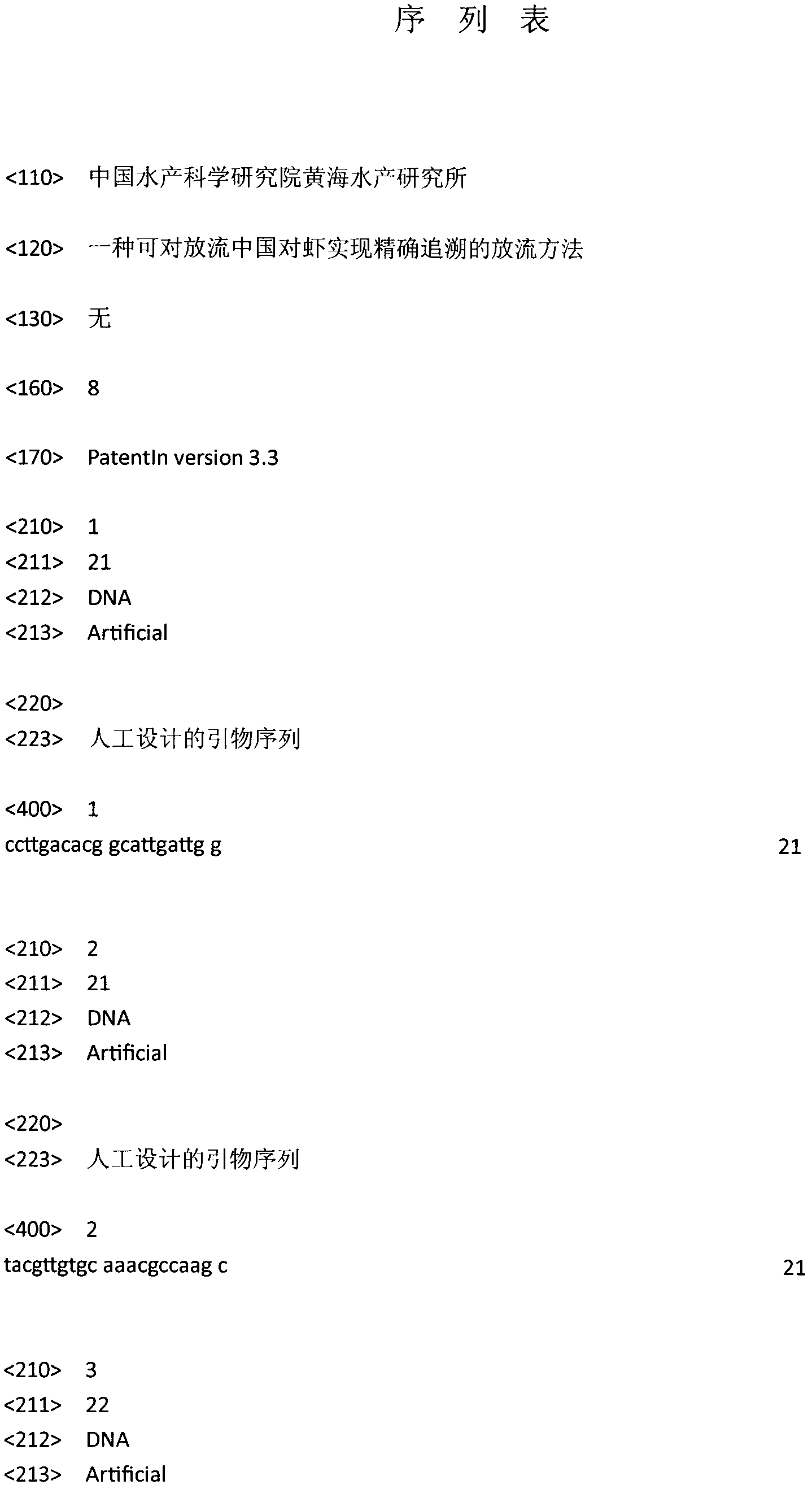Release method capable of accurately tracing released Chinese prawns
A Chinese prawn, precise technology, applied in fish farming, application, climate change adaptation, etc., can solve the problems of high individual mortality, demanding individual size requirements, and inability to accurately distinguish released and wild prawn individuals
- Summary
- Abstract
- Description
- Claims
- Application Information
AI Technical Summary
Problems solved by technology
Method used
Image
Examples
Embodiment 1
[0020] Embodiment 1: Establishment of marking and releasing populations and methods
[0021] 1. Tracing individuals of Chinese shrimp families with specific molecular fingerprints
[0022] The offspring bred by each pair of parents have a consistent DNA molecular fingerprint, which is unique to the individual / family elephant and distinguishes it from other families and individuals, and lasts a lifetime. Using this specific molecular fingerprint and referring to the parental genotype, a specific individual / family can be accurately identified from a mixed population. The microsatellites of Penaeus chinensis are widely distributed in the genome, and the level of genetic variation is rich, which has the characteristics of genetic selection neutrality. The molecular fingerprint formed by the combination of different genotypes of microsatellite molecular markers is an ideal tool for individual / family identification. Taking the Chinese prawn microsatellite loci independently develo...
Embodiment 2
[0029] Example 2: Small scale testing
[0030] In 2010, a simulation experiment of releasing water by using the method of the present invention was carried out at the Aoshanwei Experimental Base of the Yellow Sea Fisheries Research Institute. The specific implementation method is: randomly collect 100 sea-caught prawns in the autumn of the first year, and physically mark the individuals through eye-stalk markers, select 6 unmated female shrimps and 6 male shrimps, and control the mating according to the ratio of 1:1 to complete the mating. Male shrimp were stored at -76°C. Also set up a backup group. The remaining female shrimps and male shrimps mate randomly, and the female shrimps that have completed the mating are mixed with the control mating females to live through the winter. In the spring of 2010, 3 controlled mating females bred families separately. In May of that year, when the individual larvae reached about 3 cm, 100 were randomly selected from each of the 3 famil...
PUM
 Login to View More
Login to View More Abstract
Description
Claims
Application Information
 Login to View More
Login to View More - R&D
- Intellectual Property
- Life Sciences
- Materials
- Tech Scout
- Unparalleled Data Quality
- Higher Quality Content
- 60% Fewer Hallucinations
Browse by: Latest US Patents, China's latest patents, Technical Efficacy Thesaurus, Application Domain, Technology Topic, Popular Technical Reports.
© 2025 PatSnap. All rights reserved.Legal|Privacy policy|Modern Slavery Act Transparency Statement|Sitemap|About US| Contact US: help@patsnap.com



